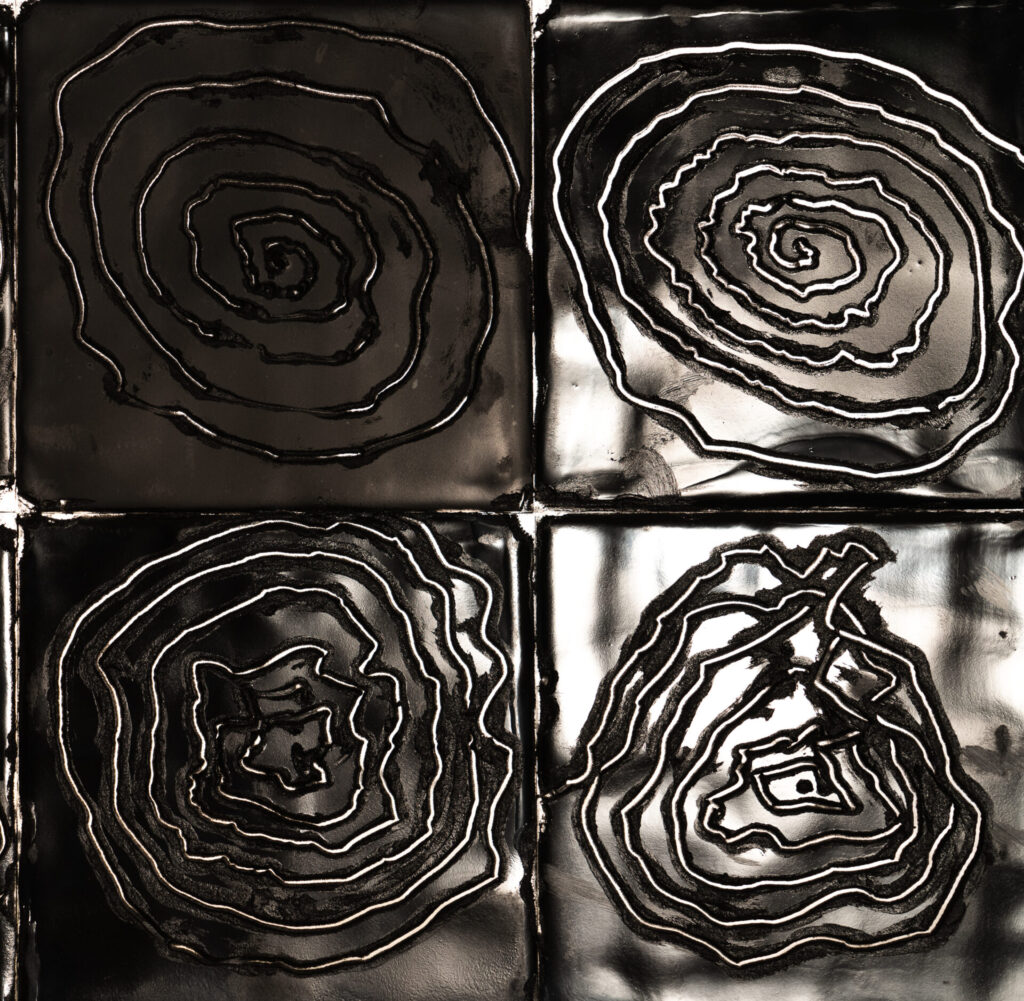Feature image: Sleep Engraver Exhibition, credit Benedict Phillips
Touching Sleep is an exploration of technology, art and cultural theory, focused on sleep, which emerged from early conversations during the first months of LivingBodiesObjects. It was inspired by discussions of how the body can be understood as a living object and how it might be recorded through the immersive technologies used across the project more widely. We chose sleep as our focus because of its element status as part of human biology, but also its increasing technologization and measurement through the proliferation of wearable and other monitoring devices.
The project involved making physical artworks derived from sleep and was developed by Stuart Murray, Dave Lynch and Christophe De Benezac. Sleep data was recorded from eight one-hour research naps Murray took across several working days and then converted through Open Sound Control software into a variable magnetic force, based on the fluctuation of Murray’s sleep patterns, which created a magnetic resistance when touched. The moment of touch itself was through the use of a hand-held stylus to create a series of spiral engravings on a set of bespoke-made tiles. The tiles were a mix of 60% oil, 20% beeswax, and 20% charcoal and painted in three layers by brush before being smoothed out through the use of a heat gun. The tiles were organized from left to right, the positioning based on the sleep data, and formed an overall pattern displaying a gradient across the eight instances of Murray’s sleep. The sleep engraver used to make the tiles is an art-making object built in collaboration with creative technologist, Nick Sparks.
The engravings were made across the course of a day by other members of the LBO team and, when finished, arranged in a 4 x 8 pattern that was backlit and framed. The ability to draw an accurate and clear spiral was influenced by the specifics of the sleep in question. Where Murray’s sleep displayed a high Heart Rate Variability, for example, the participants’ spirals are neat and well formed, but with low HRV, the resistance provided meant that the stylus appeared to have a life of its own, interfering with the experimenter’s intended movements and producing a rougher, less precise shape. Here, as the engraver touched Murray’s sleep, they were in turn touched by it; sleep was literally pushing back.

Spiral Detail Position, credit Benedict Phillips
The participants all felt that the sense of touching and responding to this provocation was unsettling. There was a feeling that the source of the encounter they were experiencing – Murray’s sleep – was an intangible background presence, but they were also aware that the marks they were making were processes of touch only made possible by the sleep data. There was a vulnerability and self-consciousness about the process.
Touching Sleep aimed to be many things. It took one person’s sleep, but dispersed it across multiple others to create a variety of encounters; it was fundamentally technological, but saw technology as inherently aligned with the aesthetics of creative making; and it sought to engage with sleep as a material property and not simply register its absence. Ultimately, the project allowed sleep to express its complexities as a tangible physical and artistic manifestation that also articulates a multitude of social and cultural dynamics.
In his book The Senses of Touch,1 Mark Paterson argues that ‘touch is crucial to embodied existence […] a modality resulting from the combined information of innumerable receptors and nerve endings concerned with pressure, temperature, pain and movement’. He continues: ‘It is a sense of communication. It is receptive, expressive, can communicate empathy. It can bring distant objects and people into proximity’. As we held the engraved tiles at the end of project, we felt that Touching Sleep had done all of these things.
- Mark Paterson. 2020. The Senses of Touch: Haptics, Affects and Technologies. London: Routledge. ↩︎

